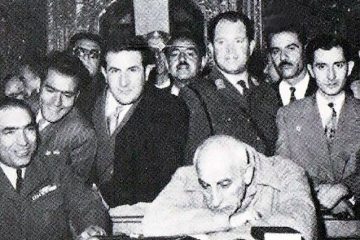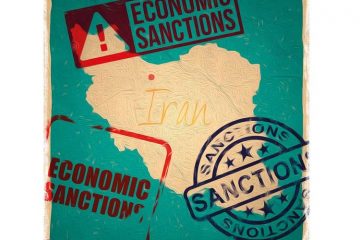A look at the Function of Saddam’s Spiritual Father in the Chemical Bombing of Sardasht
In the final years of the Iran-Iraq War, we witnessed the height of the Iran-Iraq conflict around 1966, due to the strengthening of cohesion and training by Iranian forces, as well as some successes in retaking the occupied territories. Since parts of Iran’s border areas shared a common language with the Iraqi Kurdish region, Saddam’s regime thought that these people who live in the border would cooperate with the Iraqi government, but this did not happen. In order to shock the Iranian armed forces, Saddam, for the first time since World War I and the ratification of the Convention on the Prohibition of Chemical Weapons, chemically attacked a region called Sardasht on June 28, 1987, which led to injuring approximately 10,000 people from its 13,000 total population.
Since Saddam’s chemical attack was a violation of international treaties, Iran expected the UN to file a resolution against Saddam, which passed a resolution with the passivity of international institutions, as well as some implicit and practical support from countries. And therefore was completely taken out of consideration.
Undoubtedly, Saddam alone did not have the strength or courage to launch a military strike on Iran, as he knew very well what the international consequences would be at the height of the war. Evidence released by the CIA shows that the United States was not only aware of Saddam’s chemical attack on Iran, but was also involved in Saddam’s equipment and international support. Some of the provisions of the US support and action against Saddam for the chemical attack on Sardasht include the following:
- Ronald Reagan, along with George H. W. Bush, had agreed to sell toxic chemicals and deadly biological viruses to Saddam’s government in the war with Iran, although these were later mentioned to have dual military and civilian uses;
- Helicopters carrying chemicals were sold to Iraq in 1983 by the United States to bomb Sardasht. These helicopters have dual uses, including military use, and exactly 5 years after this deal, these helicopters were used by Saddam to pour chemicals on the people of Sardasht;
- Some of the chemicals used in the bombing of Sardasht were mustard gas as well as nerve gas, which were produced in major chemical centers in the United States and had previously been used in other wars, such as Vietnam;
- The heads of the Security Council have repeatedly issued non-binding statements condemning Iraq for its use of chemical weapons. But because of the high influence of the United States and its veto power, Iraq was never condemned in this regard;
- After the end of the Iran-Iraq War, most American television channels analyzed the use of chemical weapons by Saddam. In the same program, the American ABC network (Line in the Sand) criticized the US development of covert chemical weapons by analyzing the US performance in equipping Saddam to use chemical weapons.
After the end of the Iran-Iraq War, the effects of Saddam’s chemical attack continued for generations, with a fourfold increase in the incidence of cancer among the region’s adult population. This problem is much more acute among children, and unfortunately, many children lost their lives after a while. The long-term effects of the Sardasht tragedy and Saddam’s chemical attack are:
- Blindness: Over time, the penetration of chemicals into the cornea of the eyes reduced vision and in the long run, led to its loss of sight. Unfortunately, at that time, science was not advanced enough to prevent the blindness of the injured in Sardasht;
- Sterilization: One of the most reported events was the inability to conceive due to the inhalation of mustard gases and other chemicals in the attack on Sardasht. The penetration of these substances is such that it destroys the ability to Reproductive ability in men as well as ovulation in women;
- Birth of children with disabilities: The impact of chemicals in the attack on Sardasht has affected the genetics of individuals in such a way that even if they had children after many years, their children were faced with all kinds of disabilities before birth. The birth of children without one arm or leg and other defects were among the cases that gifted prenatal paralysis to the people of Sardasht by the Americans;
- Types of cancer: One of the most common cancers resulting from the bombing of Sardasht was lung cancer, in such a way that the majority of people who had deep breathing at that time had respiratory problems with a minimal view and lung cancer with a maximum view. Due to the genetic influence of these chemicals, other cancers such as prostate, intestine and stomach were also formed as a result of chemical bombardment of Sardasht;
- Skin blisters: The effects of this gas on the skin cause blisters that have plagued the people of Sardasht for years.
Although the American-style reception of the people of Sardasht with mustard and nerve gases by Saddam, as well as the blistering of the people of this region, did not cause Iraq to be convicted of war crimes, but the facts that were clarified by the American media about its prominent role in donating The chemicals to Iraq exposed a part of the American human rights claim.
Reference
The Magisterial History of America, Mohammad Sadegh Koushki, Shahid Kazemi Publication (2019)
The Dark List of American Crimes against the Iranian Nation, Allah Bakhsh Najafi Ali Mohammadlu, Negin Sabalan Publication (2015)



0 Comments